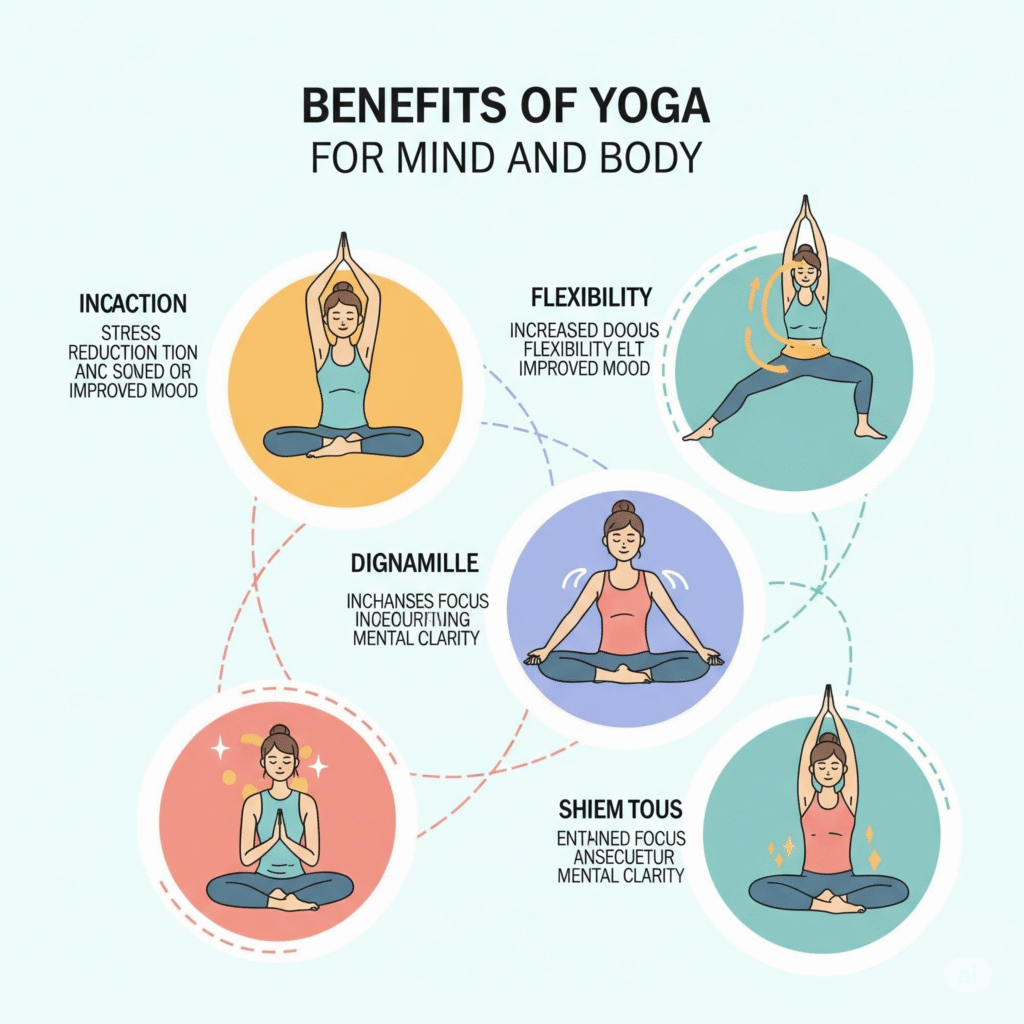Yoga has been practiced for thousands of years and remains one of the most popular forms of exercise worldwide. But yoga is much more than just stretching — it’s a holistic practice that nurtures both the mind and the body. Whether you’re a beginner or have been practicing yoga for years, understanding its benefits can inspire you to make it a regular part of your routine.

1. Improves Flexibility and Strength
Yoga poses gently stretch your muscles, increasing flexibility over time. Many poses also build muscle strength, which helps protect your body from injury and improves posture.
2. Enhances Mental Clarity and Focus
Through mindful breathing and meditation techniques, yoga helps calm the mind, reduce mental clutter, and improve concentration. This mental clarity can increase productivity and reduce feelings of overwhelm.
3. Reduces Stress and Anxiety
Regular yoga practice lowers cortisol levels — the body’s main stress hormone. Deep breathing and meditation trigger the relaxation response, which can reduce anxiety and promote a sense of calm.
4. Boosts Respiratory Function
Yoga includes specific breathing exercises (pranayama) that improve lung capacity and oxygen intake, promoting better respiratory health and endurance.
5. Supports Heart Health
Yoga has been shown to lower blood pressure, improve circulation, and reduce heart rate, all of which contribute to a healthier cardiovascular system.
6. Enhances Sleep Quality
Practicing yoga before bedtime can help relax the nervous system and prepare the body for restful sleep, making it easier to fall asleep and stay asleep longer.
7. Promotes Mind-Body Awareness
Yoga encourages you to tune into your body and mind, recognizing areas of tension or discomfort. This awareness can lead to better self-care and healthier lifestyle choices.
8. Improves Balance and Coordination
Balancing poses enhance body coordination and stability, reducing the risk of falls, especially in older adults.
How to Get Started
- Start Slow: Begin with beginner-friendly classes or online tutorials.
- Consistency is Key: Aim for 15–30 minutes daily or several times a week.
- Focus on Breath: Pay attention to your breathing—it’s central to yoga’s benefits.
- Use Props: Blocks, straps, and cushions can make poses more accessible.
- Listen to Your Body: Avoid pushing into pain; yoga should feel good.
Final Thoughts
Yoga is a powerful tool for improving overall wellness. It’s accessible to all ages and fitness levels, and its benefits extend beyond the physical, nurturing mental and emotional health as well. Whether your goal is stress relief, flexibility, or a stronger mind-body connection, yoga offers a path toward holistic well-being.
How to Build a Balanced Meal
🍽️ Introduction:…
🥗 Vegan Lentil & Spinach Salad
✅ Vegan…
Baijnath Temple – The Timeless Shrine of Lord Shiva
Introduction In…
Day 2 — Installing Python and Writing Your First “Hello, World!” Program
Python in…
AI in Healthcare: Diagnosing Disease Faster Than Doctors?
AI in…
Baba Balak Nath Temple – Faith, Devotion & Eternal Blessings in Hamirpur
Introduction Among…








